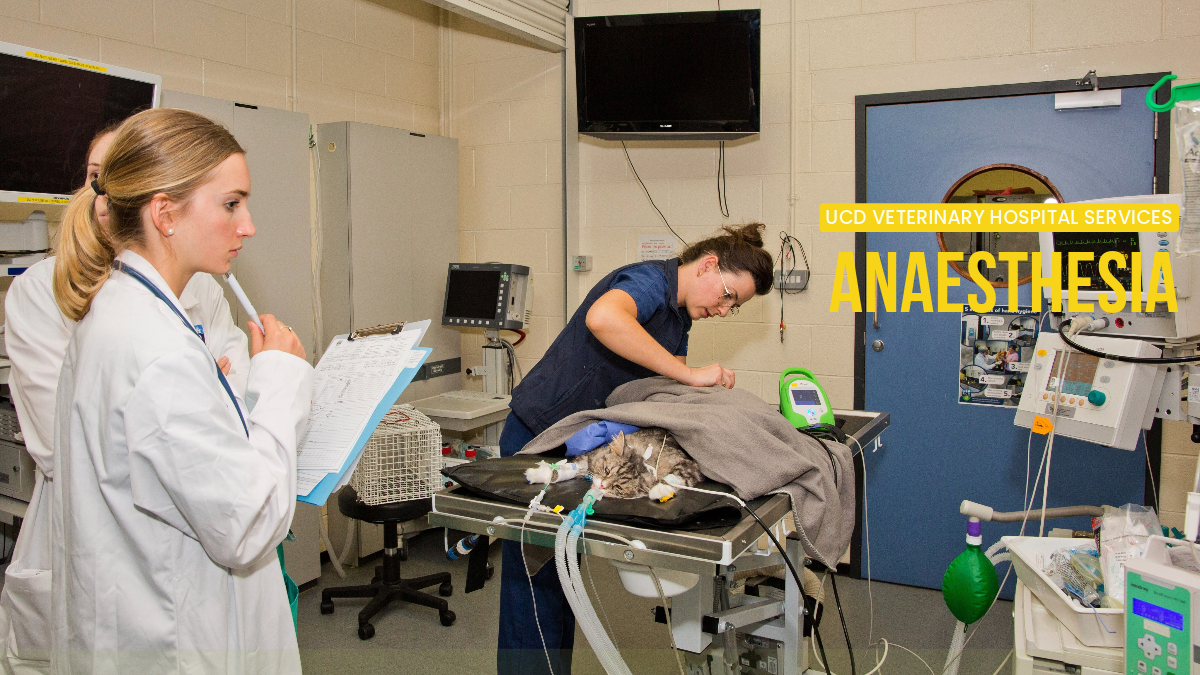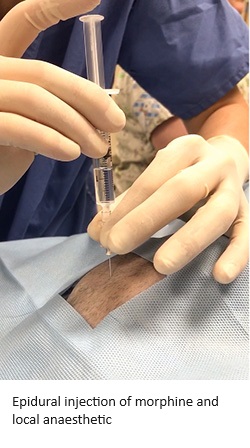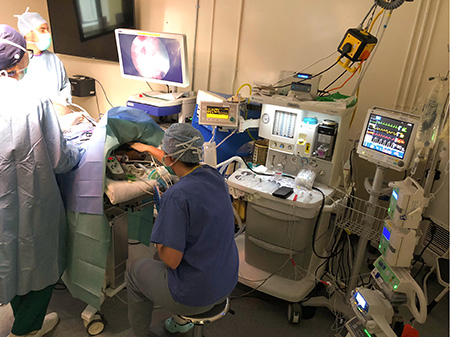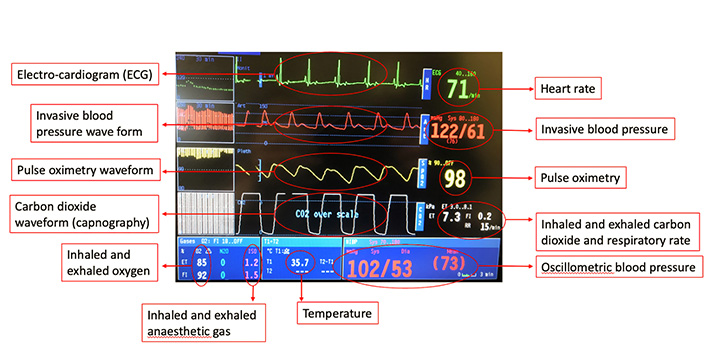If your pet is undergoing diagnostic procedures or surgery at UCD Veterinary Hospital, then analgesia, sedation or general anaesthesia may be required.
A dedicated team of anaesthetists at UCD Veterinary Hospital provide anaesthesia for over 2,000 dogs, cats, horses, cattle, sheep, goats, pigs and exotics pets each year. Our team includes three European specialists in veterinary anaesthesia, one anaesthesia registrar, two anaesthesia residents, one anaesthesia intern and three small animal anaesthesia nurses.
Anaesthesia, like any medical procedure, carries inherent risks including, but not limited to, low blood pressure, respiratory depression, adverse reaction to anaesthetic drugs and allergic reactions. For this reason, each patient has an anaesthetist dedicated to their case, with supervision provided by a European specialist in veterinary anaesthesia. When anaesthetic cases are particularly complex there will be two anaesthetists assigned to a case, again with support provided by a European specialist in veterinary anaesthesia.

 intraoperative analgesia and will be performed in most surgical patients if feasible. An example of regional anaesthesia which most people have experienced is the injection of local anaesthetic for tooth extraction while at the dentist. Regional anaesthesia for tooth extraction is commonly performed for dental procedures also in anaesthetised veterinary patients. Another form of regional anaesthesia is epidural anaesthesia (the deposition of local anaesthetic around the spinal cord), which causes loss of pain sensation in the hindquarters, providing excellent analgesia for painful hindlimb surgery.
intraoperative analgesia and will be performed in most surgical patients if feasible. An example of regional anaesthesia which most people have experienced is the injection of local anaesthetic for tooth extraction while at the dentist. Regional anaesthesia for tooth extraction is commonly performed for dental procedures also in anaesthetised veterinary patients. Another form of regional anaesthesia is epidural anaesthesia (the deposition of local anaesthetic around the spinal cord), which causes loss of pain sensation in the hindquarters, providing excellent analgesia for painful hindlimb surgery.  After admission the specialist team will provide an internal referral request to our anaesthesia department requesting service for the required surgery or procedure. A member of our team will then perform, plan and deliver the most appropriate analgesia, sedation and anaesthesia plan as listed below for the patient.
After admission the specialist team will provide an internal referral request to our anaesthesia department requesting service for the required surgery or procedure. A member of our team will then perform, plan and deliver the most appropriate analgesia, sedation and anaesthesia plan as listed below for the patient.